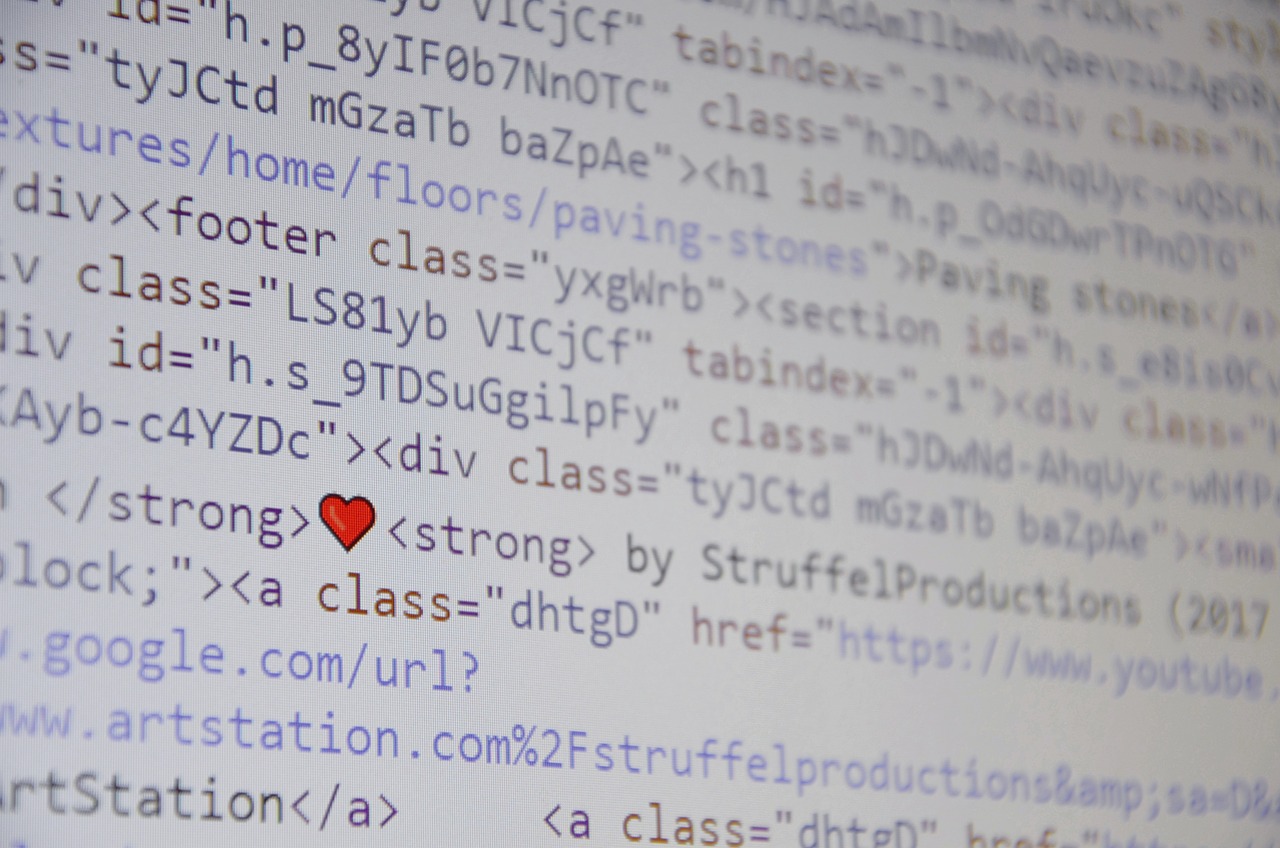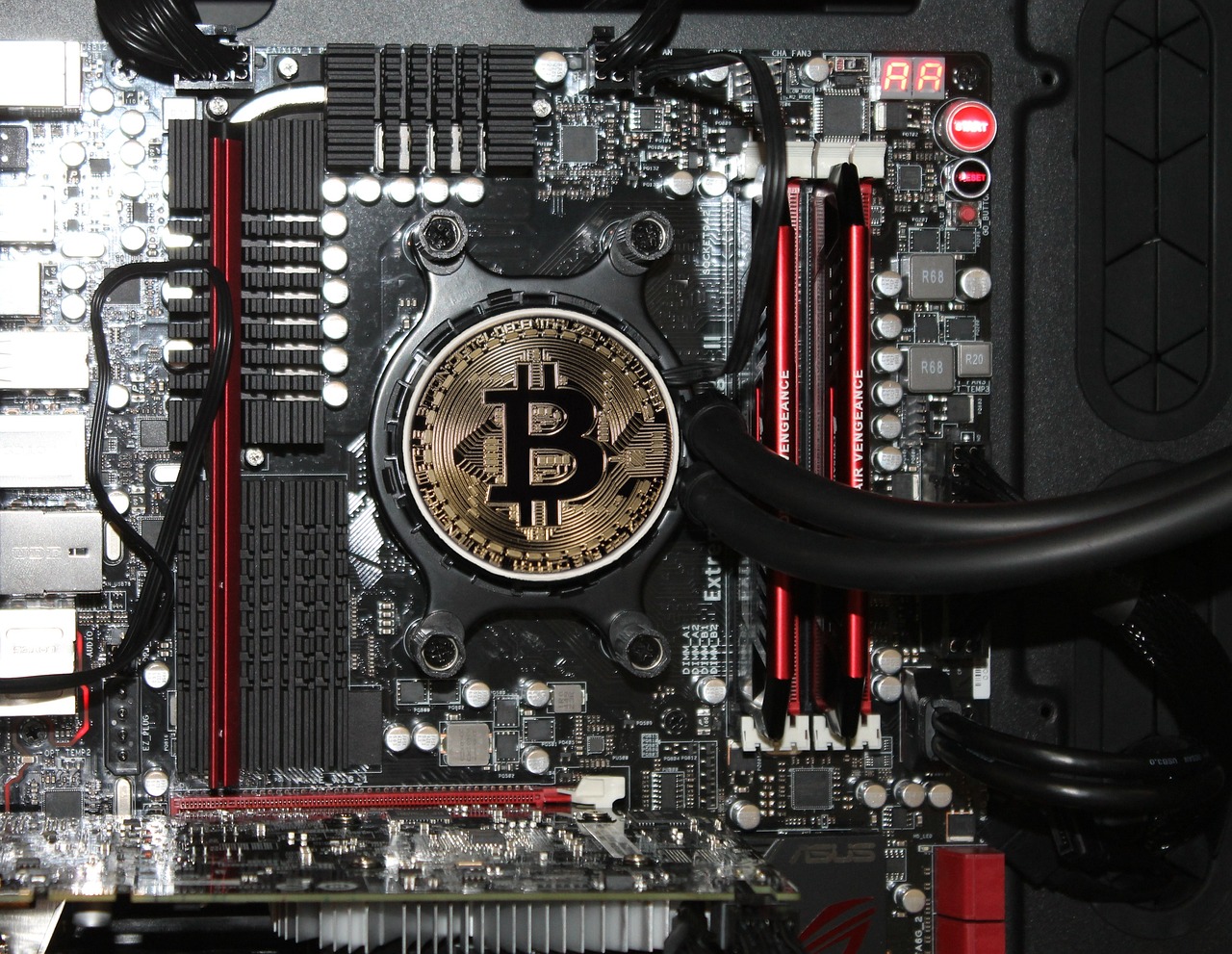Understanding the Importance of Open Source in Blockchain Development
In today's digital landscape, the concept of open source has become synonymous with innovation and collaboration, especially in the realm of blockchain development. But what does it really mean? At its core, open source refers to software whose source code is made available to the public, allowing anyone to inspect, modify, and enhance it. This principle is not just a technical choice; it's a philosophy that champions transparency and community-driven growth. By leveraging open source, developers can create solutions that are not only robust but also secure, as the collective scrutiny of many eyes helps identify vulnerabilities that a single entity might overlook.
Imagine building a house. If you only had one architect designing it, you might end up with a beautiful structure, but what if that architect misses a crucial detail? Now imagine a team of architects, engineers, and builders all contributing their insights to create a home that not only looks great but is also structurally sound and energy-efficient. This analogy is similar to how open source works in blockchain. When developers collaborate, sharing their expertise and perspectives, the end product becomes significantly better. The result is a decentralized application (dApp) that stands the test of time, backed by a community that is invested in its success.
Furthermore, the open-source model fosters a culture of innovation. With access to a wide array of tools and resources, developers can experiment freely, pushing the boundaries of what’s possible in blockchain technology. This environment of creativity encourages the rapid development of new features and functionalities, ultimately leading to a richer ecosystem of decentralized applications. As developers iterate on existing projects, they are not just improving upon them; they are also paving the way for entirely new ideas that can revolutionize industries.
However, it's essential to acknowledge that the open-source approach is not without its challenges. As projects grow, issues related to governance and sustainability can arise. For instance, how do you ensure that all contributors have a voice in decision-making? What funding models can sustain ongoing development? Addressing these questions is vital for maintaining the health of open-source projects. As the community rallies around these challenges, it not only strengthens individual projects but also the entire blockchain landscape.
In conclusion, the importance of open source in blockchain development cannot be overstated. It fosters a collaborative environment that enhances security, encourages innovation, and ultimately leads to more reliable and effective solutions. As we continue to explore the potential of blockchain technology, embracing open-source principles will be crucial for driving progress and ensuring that the technology remains accessible and beneficial for all.
- What is open source? Open source refers to software that allows anyone to view, modify, and distribute its source code.
- How does open source enhance security in blockchain? Open-source projects benefit from community scrutiny, which helps identify and address vulnerabilities more quickly.
- What are some challenges of open source in blockchain? Challenges include governance issues and the need for sustainable funding models to support ongoing development.
- Why is collaboration important in blockchain development? Collaboration brings diverse perspectives and expertise, leading to innovative solutions and a more robust ecosystem.

The Role of Open Source in Blockchain
Open source is not just a buzzword; it’s the lifeblood of blockchain development. Imagine a world where anyone can peek under the hood of a car, tweak the engine, and make it run better. That’s precisely what open-source principles do for blockchain technology. They promote transparency and collaboration among developers, allowing anyone interested to inspect, modify, and enhance the code. This openness leads to the creation of robust and secure blockchain solutions that are built collectively, rather than in isolation.
When developers work in silos, innovation can stagnate. However, with open-source projects, a diverse group of talented individuals from around the globe can come together. They bring unique perspectives and ideas that can challenge the status quo. Think of it like a potluck dinner where everyone brings their favorite dish. The more diverse the contributions, the richer the experience for everyone involved!
Moreover, open-source projects often have a community backing them. This community is not just a group of passive observers; they are active participants who contribute to the project’s success. They report bugs, suggest features, and even write documentation. This collaborative environment fosters a sense of ownership and pride among contributors, which can lead to higher quality software. With many eyes on the code, vulnerabilities are identified and addressed swiftly, fostering trust in blockchain applications.
Another significant aspect of open source in blockchain is its ability to facilitate rapid iteration. Developers can leverage existing codebases, allowing them to build upon previous work rather than starting from scratch. This not only speeds up the development process but also encourages innovation by enabling rapid prototyping. As a result, new ideas can be tested and refined quickly, leading to groundbreaking advancements in the technology.
In summary, the role of open source in blockchain development cannot be overstated. It creates a transparent and collaborative environment that drives innovation, enhances security, and ultimately leads to better products. As we continue to explore the potential of blockchain technology, embracing open-source principles will be crucial in shaping the future of decentralized applications.
- What is open source in blockchain? Open source in blockchain refers to software whose source code is made publicly available for anyone to inspect, modify, and enhance, fostering collaboration and transparency.
- How does open source enhance security? Open-source projects benefit from community scrutiny, which helps identify and fix vulnerabilities quickly, leading to more secure applications.
- Can anyone contribute to open-source blockchain projects? Yes, anyone with the necessary skills can contribute to open-source projects, regardless of their background or location.
- What are the challenges of open-source blockchain development? Challenges include governance issues and the need for sustainable funding models to support ongoing development.

Benefits of Open Source Software
Open source software is like a treasure chest brimming with advantages that can revolutionize the way we approach technology. One of the most significant benefits is cost-effectiveness. Imagine being able to access high-quality software without the hefty price tag that often accompanies proprietary solutions. Organizations can tap into a vast pool of existing codebases, allowing them to save money and time. This not only accelerates project timelines but also enables developers to focus their resources on innovation rather than licensing fees.
Another remarkable aspect of open source software is its flexibility. Developers have the freedom to customize and modify the software to meet their specific needs. This adaptability is crucial in the fast-paced world of technology, where requirements can change overnight. With open-source solutions, organizations can pivot quickly and implement changes without waiting for a vendor to release updates or patches. This agility is akin to having a Swiss Army knife at your disposal—versatile and ready to tackle any challenge.
Moreover, the community support surrounding open source projects is invaluable. When you choose an open-source solution, you’re not just getting software; you’re becoming part of a vibrant community of developers, enthusiasts, and users. This community actively contributes to the project by providing insights, bug fixes, and feature enhancements. Over time, this collaborative effort results in a more refined and reliable product. It’s like having a team of experts working alongside you, constantly improving the software based on real-world feedback.
To illustrate the benefits of open source software, let’s take a look at a comparison table that highlights some key advantages:
| Benefit | Description |
|---|---|
| Cost Efficiency | Reduces development costs by eliminating licensing fees and leveraging existing code. |
| Flexibility | Allows customization and modification to fit specific organizational needs. |
| Community Support | Provides access to a network of contributors for insights and improvements. |
In summary, the benefits of open source software are profound and far-reaching. From cost savings and flexibility to the power of community support, open source is paving the way for innovation and collaboration in a way that proprietary software simply cannot match. So why not embrace the open-source revolution? It’s not just about using software; it’s about being part of a movement that champions transparency, collaboration, and continuous improvement.
- What is open source software?
Open source software is software whose source code is made available for anyone to inspect, modify, and enhance. This promotes transparency and community collaboration.
- How does open source software enhance security?
Open source software benefits from community scrutiny, allowing vulnerabilities to be identified and fixed quickly, leading to more secure applications.
- Can organizations rely on open source software?
Absolutely! Many organizations successfully use open source software, benefiting from its flexibility, cost-effectiveness, and community support.

Cost Efficiency
When it comes to , open-source solutions shine like a diamond in the rough. Imagine you're building a house; would you rather start from scratch or use a solid foundation that’s already been laid? That’s the beauty of open-source software in blockchain development. By leveraging existing codebases, organizations can significantly reduce their development costs. This not only minimizes the need for extensive resources but also accelerates project timelines. In fact, many companies have reported that using open-source solutions can cut their overall expenses by up to 70%!
One of the most appealing aspects of open-source software is the elimination of licensing fees. Traditional proprietary software often comes with hefty price tags that can drain budgets faster than you can say "blockchain." With open-source, organizations can redirect funds towards other critical areas of development, such as research, marketing, and enhancing user experience. This reallocation of resources enables teams to focus on what truly matters—creating a product that resonates with users.
Moreover, the community contributions play a pivotal role in driving cost efficiency. The open-source community is a treasure trove of talent, offering valuable insights, bug fixes, and feature enhancements. This collaborative spirit not only enriches the development process but also leads to a more refined and reliable product over time. When developers from various backgrounds come together, they bring unique perspectives that can help identify potential pitfalls and optimize solutions.
To illustrate the cost-saving potential of open-source software, consider the following table:
| Aspect | Proprietary Software | Open Source Software |
|---|---|---|
| Initial Costs | High Licensing Fees | No Licensing Fees |
| Development Time | Longer due to starting from scratch | Faster with existing codebases |
| Community Support | Limited | Vast and active |
| Customization | Restricted | Highly flexible |
In conclusion, embracing open-source solutions in blockchain development not only fosters a culture of innovation but also offers significant cost benefits. By leveraging community-driven projects, organizations can achieve remarkable savings while building robust and secure applications. So, why not take the plunge? The world of open-source is waiting to be explored!
- What is open-source software? Open-source software is software with source code that anyone can inspect, modify, and enhance.
- How does open-source improve security? Open-source projects benefit from community scrutiny, allowing vulnerabilities to be identified and addressed quickly.
- Can I use open-source software for commercial purposes? Yes, most open-source licenses allow for commercial use, but it's essential to check the specific license terms.
- What are the main challenges of open-source software? Challenges include governance issues and the need for sustainable funding models.

Reduced Licensing Fees
One of the most compelling advantages of utilizing open-source software in blockchain development is the significant reduction in licensing fees. Traditional proprietary software often comes with hefty price tags that can strain budgets, especially for startups and small businesses. In contrast, open-source solutions are typically available at no cost, allowing organizations to allocate their financial resources more strategically. Imagine being able to funnel those savings into other critical areas such as research, marketing, or even enhancing user experience. This shift not only boosts the overall quality of the project but also enhances competitiveness in a fast-paced market.
Furthermore, the absence of licensing fees means that developers can experiment freely without the fear of incurring additional costs. This fosters a culture of innovation, where teams can explore new ideas, iterate on existing solutions, and push the boundaries of what’s possible in blockchain technology. The freedom to modify and distribute software without financial constraints encourages a more dynamic and creative development environment.
In addition to direct cost savings, organizations can benefit from the collective knowledge and expertise of the open-source community. Developers around the globe contribute their skills and insights, often leading to faster problem resolution and the introduction of new features. This collaborative spirit not only improves the quality of the software but also creates a sense of ownership among contributors, who are motivated to ensure the project’s success.
To illustrate the impact of reduced licensing fees, consider the following table comparing the costs associated with proprietary software versus open-source alternatives:
| Cost Category | Proprietary Software | Open Source Software |
|---|---|---|
| Initial Licensing Fee | $10,000 | $0 |
| Annual Maintenance Fees | $2,000 | $0 |
| Customization Costs | $5,000 | Variable (depends on community contributions) |
| Total 3-Year Cost | $36,000 | $0 - $15,000 (depending on contributions) |
As seen in the table, the financial benefits of adopting open-source software can be substantial. Organizations can save tens of thousands of dollars, allowing them to invest in other vital areas of their business. By choosing open-source solutions, companies not only cut costs but also embrace a collaborative model that promotes innovation and community engagement.
In conclusion, the reduction of licensing fees is a game-changer for organizations looking to innovate in the blockchain space. It empowers developers to focus on creating high-quality products without the burden of financial constraints, ultimately leading to a more vibrant and dynamic ecosystem.
- What is open-source software? Open-source software is software that allows users to view, modify, and distribute its source code freely.
- How does open-source software enhance security? Open-source projects benefit from community scrutiny, which helps identify and address vulnerabilities quickly.
- Are there any costs associated with open-source software? While open-source software is generally free, there may be costs related to customization or support services.
- Can I contribute to open-source projects? Absolutely! Anyone can contribute to open-source projects by reporting bugs, suggesting features, or even writing code.

Community Contributions
The strength of open-source software lies in its vibrant and active community. When it comes to blockchain development, this community plays a pivotal role in enhancing the quality and security of projects. Imagine a bustling marketplace where everyone is sharing ideas, tools, and solutions—this is essentially what the open-source community embodies. Developers, enthusiasts, and even casual users come together to contribute to projects, each bringing their unique skills and perspectives to the table.
Community contributions can take many forms, from code submissions and bug fixes to documentation and user support. For instance, a developer might identify a security vulnerability in a blockchain protocol and submit a patch to fix it. This not only improves the software but also builds trust among users who can see that the code is actively maintained and scrutinized. Moreover, the collaborative nature of these contributions often leads to innovative features that may not have been conceived by a single team working in isolation.
Here are some key aspects of community contributions in open-source blockchain projects:
- Peer Review: Community members actively review each other’s code, which leads to higher quality and more secure applications. With many eyes on the code, problems are often spotted and resolved quickly.
- Feature Requests: Users can suggest new features or improvements based on their experiences, which helps developers prioritize what to work on next.
- Documentation and Tutorials: Many community members contribute by creating guides and tutorials, making it easier for newcomers to understand the technology and get involved.
Moreover, community contributions foster a sense of ownership and belonging. When developers participate in an open-source project, they are not just coding; they are part of a larger movement that champions transparency and collaboration. This can be incredibly motivating. It’s like being part of a sports team where every player’s contribution is crucial to winning the game.
In conclusion, community contributions are the lifeblood of open-source blockchain projects. They not only enhance the functionality and security of the software but also create a collaborative environment that drives innovation. As more developers recognize the value of contributing to open-source projects, the blockchain landscape will continue to evolve, becoming more robust and user-friendly.
Q1: What is open-source software?
Open-source software is software that allows anyone to inspect, modify, and enhance its code. This promotes transparency and collaboration among developers.
Q2: How does the open-source community contribute to blockchain projects?
The open-source community contributes by reviewing code, suggesting features, fixing bugs, and creating documentation, which helps improve the overall quality and security of blockchain applications.
Q3: What are the benefits of using open-source software in blockchain development?
Benefits include cost efficiency, enhanced security, community support, and the ability to leverage existing codebases for rapid prototyping and innovation.
Q4: What challenges do open-source blockchain projects face?
Challenges include governance issues, sustainability of funding, and the need for effective management to ensure that community interests are represented.

Enhanced Security
This article explores how open-source principles enhance transparency, collaboration, and innovation in blockchain technology, fostering community-driven development and ensuring security in decentralized applications.
Open source is fundamental in blockchain development, promoting transparency and collaboration among developers. It allows anyone to inspect, modify, and enhance the code, leading to robust and secure blockchain solutions.
Open source software offers numerous advantages, including cost-effectiveness, flexibility, and community support. These benefits empower developers to create innovative solutions while reducing reliance on proprietary software.
Utilizing open-source solutions significantly lowers development costs. Organizations can leverage existing codebases, minimizing the need for extensive resources while accelerating project timelines and reducing overall expenses.
Open source software eliminates the burden of licensing fees, allowing organizations to allocate funds to other critical areas of development, such as research, marketing, and user experience enhancements.
The open-source community actively contributes to project development, providing valuable insights, bug fixes, and feature enhancements, which can lead to a more refined and reliable product over time.
In the world of blockchain, security is paramount, and open-source projects have a distinct advantage in this arena. When the source code is available for anyone to inspect, it invites a multitude of developers and security experts to scrutinize it. This collective effort results in a more secure environment for decentralized applications. Think of it like a massive group of detectives working together to identify vulnerabilities—more eyes mean more chances to catch issues before they become serious problems.
Moreover, open-source projects benefit from the principle of transparency. Users can verify the integrity of the code themselves, which builds a sense of trust. Here’s how this enhanced security manifests:
- Rapid Vulnerability Identification: With numerous contributors analyzing the code, potential vulnerabilities are often identified and addressed swiftly.
- Community-Driven Audits: Many open-source projects are subject to regular audits by the community, which can lead to a more secure product.
- Continuous Improvement: As new security threats emerge, the community can quickly adapt, ensuring the software remains resilient against attacks.
This open collaboration not only enhances security but also fosters a culture of continuous improvement. Developers are motivated to keep their projects up-to-date, ensuring that they are equipped to handle the latest security challenges. In essence, open source acts as a shield, where the collective intelligence of the community reinforces the security framework of blockchain applications.
Open source encourages collaboration among developers worldwide. This collective effort drives innovation, as diverse perspectives lead to unique solutions and advancements in blockchain technology.
The global nature of open-source projects attracts contributions from various backgrounds, enriching the development process with diverse ideas and solutions that cater to a broader audience.
Open-source frameworks facilitate rapid prototyping, allowing developers to quickly test and iterate on new ideas. This agility fosters a culture of experimentation and innovation within the blockchain space.
Despite its many benefits, open source in blockchain faces challenges, including governance issues and the need for sustainable funding models. Addressing these challenges is crucial for the longevity of open-source projects.
Establishing effective governance models is essential for managing open-source blockchain projects. Clear decision-making processes help maintain project direction and ensure that community interests are represented.
Sustainable funding models are necessary to support ongoing development and maintenance of open-source projects. Finding ways to secure financial resources while remaining true to open-source principles is a key challenge.
Open source in blockchain refers to the practice of making the source code of blockchain projects publicly available, allowing anyone to inspect, modify, and enhance it. This promotes transparency and collaboration.
Open source enhances security by allowing a large community of developers to review the code, identify vulnerabilities, and implement fixes quickly. This collaborative scrutiny helps ensure that blockchain applications are secure and trustworthy.
The main benefits include cost efficiency, flexibility, community support, and enhanced security. Open-source solutions often come without licensing fees and allow for rapid innovation through community contributions.
Yes, challenges include governance issues and the need for sustainable funding models. Effective management and financial resources are crucial for the success and longevity of these projects.

Collaboration and Innovation
Open source is like a vibrant marketplace where ideas flow freely, and innovation thrives. When developers from different corners of the globe come together, they bring unique perspectives that spark creativity and drive groundbreaking solutions. Imagine a potluck dinner: everyone brings their favorite dish, and together, they create a feast that's far more exciting than any single dish. This is the essence of open-source collaboration in the blockchain space.
The beauty of open-source projects lies in their ability to harness the collective intelligence of a diverse community. Developers, designers, and enthusiasts contribute their skills, knowledge, and experiences, resulting in a rich tapestry of innovation. This collaborative environment not only accelerates the development process but also leads to solutions that are more robust and user-friendly. For instance, when tackling a complex problem, a group of developers might brainstorm various approaches, leading to a variety of solutions that can be tested and refined.
Moreover, open-source projects encourage rapid prototyping. This means that developers can quickly create and test new ideas without the constraints typically associated with proprietary software. They can iterate rapidly, making adjustments based on user feedback and real-world testing. This agility fosters a culture of experimentation, allowing groundbreaking ideas to surface and evolve in a way that traditional development models often cannot match.
Collaboration in open-source also extends beyond just coding. It involves sharing knowledge through documentation, tutorials, and community forums. These resources empower new contributors to join the project, enhancing the pool of talent and ideas. In essence, the open-source community acts like a living organism, constantly adapting and growing through shared learning and collaboration.
To illustrate the impact of collaboration in open-source blockchain development, consider the following table that outlines some notable open-source projects and their contributions to innovation:
| Project Name | Description | Key Innovations |
|---|---|---|
| Bitcoin | The first decentralized cryptocurrency. | Introduced blockchain technology and proof-of-work consensus. |
| Ethereum | A platform for decentralized applications (dApps). | Smart contracts and decentralized finance (DeFi). |
| Hyperledger | A collaborative effort to advance cross-industry blockchain technologies. | Frameworks for enterprise solutions and modular architecture. |
In conclusion, the synergy created by open-source collaboration not only enhances the development of blockchain technologies but also fosters a spirit of community and shared purpose. As developers continue to innovate and push boundaries, we can expect to see even more exciting advancements in the blockchain landscape, driven by the power of collaboration.
- What is open source? Open source refers to software whose source code is made available for anyone to inspect, modify, and enhance.
- How does open source benefit blockchain development? Open source promotes transparency, collaboration, and innovation, leading to more secure and robust blockchain solutions.
- Can anyone contribute to open-source blockchain projects? Yes! Open-source projects welcome contributions from anyone, regardless of their skill level.
- What are some challenges faced by open-source projects? Challenges include governance issues and the need for sustainable funding models to support ongoing development.

Diverse Contributions
The beauty of open-source projects lies in their ability to attract a rich tapestry of contributions from individuals across the globe. Imagine a vibrant marketplace where ideas flow freely, and innovation blossoms with every interaction. This is precisely what happens in the open-source community. Developers, designers, and enthusiasts from various backgrounds come together, each bringing their unique perspectives and skills to the table. This diversity not only enriches the development process but also ensures that the resulting solutions are more inclusive and cater to a broader audience.
When we talk about diverse contributions, we’re not just referring to different skill sets. We’re also looking at a variety of cultural viewpoints and experiences that shape how problems are approached and solved. For instance, a developer from one region might have insights into specific local challenges that others may overlook. This leads to the creation of features that are not only innovative but also relevant to different user bases around the world.
Moreover, the collaborative nature of open-source projects fosters an environment where knowledge sharing is paramount. Developers often engage in discussions, code reviews, and brainstorming sessions that can lead to unforeseen breakthroughs. Think of it as a melting pot of ideas where the best solutions rise to the top. This synergy is crucial in the fast-evolving world of blockchain technology, where the pace of change is rapid, and the need for adaptability is constant.
As a result, open-source projects benefit from:
- Innovative Solutions: Diverse teams are more likely to think outside the box and develop creative solutions that push the boundaries of what’s possible.
- Improved User Experience: By incorporating feedback from a wider audience, developers can create applications that are user-friendly and accessible to everyone.
- Stronger Community Bonds: Working collaboratively fosters a sense of belonging and commitment among contributors, enhancing the overall project sustainability.
In conclusion, the diversity of contributions in open-source blockchain projects is not just a benefit; it’s a necessity. It drives innovation, enhances security, and ultimately leads to more robust and reliable applications. As we continue to navigate the complexities of blockchain technology, embracing this diversity will be key to unlocking its full potential.
Q1: What is open source in the context of blockchain?
A1: Open source in blockchain refers to software whose source code is made publicly available, allowing anyone to inspect, modify, and enhance it. This transparency promotes collaboration and innovation within the blockchain community.
Q2: How do diverse contributions impact blockchain projects?
A2: Diverse contributions bring in a variety of perspectives and skills, leading to innovative solutions and improved user experiences. They also foster a collaborative environment that enhances project sustainability.
Q3: What are some challenges faced by open-source blockchain projects?
A3: Some challenges include establishing effective governance models and securing sustainable funding. Addressing these issues is crucial for the longevity and success of open-source initiatives.
Q4: Why is community support important in open-source development?
A4: Community support is vital as it provides valuable insights, bug fixes, and feature enhancements. A strong community can significantly improve the quality and reliability of open-source projects over time.

Rapid Prototyping
Rapid prototyping is a game changer in the world of blockchain development. Imagine being able to take an idea from a mere thought to a tangible product in the blink of an eye! This process not only accelerates development timelines but also fosters a culture of innovation. With open-source frameworks, developers can quickly create, test, and refine their concepts without the lengthy and often cumbersome processes associated with traditional software development.
One of the key advantages of rapid prototyping in the blockchain space is the ability to experiment freely. Developers can build prototypes to test new features or functionalities without the pressure of getting everything right on the first try. This iterative approach allows teams to gather feedback early and often, making adjustments based on real user experiences. It’s like having a sandbox where you can play, break things, and learn how to make them better.
Moreover, rapid prototyping enables teams to engage stakeholders throughout the development process. By presenting working models to investors, users, or community members, developers can gain valuable insights that might not have been considered otherwise. This collaborative feedback loop not only improves the end product but also builds a sense of community and ownership among all involved. In fact, many successful blockchain projects have roots in community-driven ideas that emerged from prototype testing.
To illustrate the benefits of rapid prototyping, consider the following table that compares traditional development methods with rapid prototyping in the context of blockchain:
| Aspect | Traditional Development | Rapid Prototyping |
|---|---|---|
| Development Time | Longer, with multiple phases | Shorter, with iterative cycles |
| Feedback Incorporation | Late in the process | Ongoing throughout |
| Flexibility | Less flexible, changes are costly | Highly flexible, encourages change |
| Community Involvement | Limited | High, fosters collaboration |
In conclusion, rapid prototyping is not just a method; it’s a mindset that drives innovation and collaboration in blockchain development. By embracing this approach, developers can create more resilient, user-friendly, and impactful applications that meet the evolving needs of the community. So, if you're a developer looking to make waves in the blockchain space, consider adopting rapid prototyping as your go-to strategy!
- What is rapid prototyping? Rapid prototyping is a development approach that allows for the quick creation of prototypes to test ideas and gather feedback.
- How does rapid prototyping benefit blockchain development? It accelerates the development process, encourages experimentation, and enhances community involvement.
- Can anyone participate in open-source rapid prototyping? Absolutely! Open-source projects invite contributions from developers worldwide, fostering collaboration.
- What are some tools used for rapid prototyping in blockchain? Popular tools include Ethereum for smart contracts, Hyperledger for enterprise solutions, and various JavaScript frameworks for building decentralized applications.

Challenges of Open Source in Blockchain
While the open-source model in blockchain development is undoubtedly revolutionary, it does come with its own set of challenges that can impede progress and sustainability. One of the most pressing issues is the governance model that governs these projects. Unlike traditional software development, where a single entity often holds the reins, open-source projects rely on community input and consensus. This can lead to confusion about decision-making processes, resulting in delays or misalignment in project goals. For instance, when multiple contributors have differing opinions on the direction of a project, it can create a stalemate, stifling innovation and causing frustration among developers.
Another significant challenge is the need for sustainable funding. Open-source projects often rely on donations, sponsorships, or voluntary contributions, which can be unpredictable. Without a steady stream of financial resources, maintaining and developing these projects can become a daunting task. Imagine trying to build a house without a reliable supply of bricks; similarly, without funding, the foundation of an open-source project can crumble. To address this, many open-source blockchain projects are exploring various funding models, including token sales or partnerships, to ensure they have the necessary resources for ongoing development.
Moreover, the community dynamics in open-source projects can be complex. While collaboration is a hallmark of the open-source ethos, it can also lead to conflicts. Developers may have different levels of commitment, expertise, and communication styles, which can result in misunderstandings and tension. It’s crucial for projects to foster a culture of respect and inclusivity to mitigate these issues. Establishing clear guidelines and encouraging open dialogue can help create a more cohesive community.
Lastly, the security of open-source blockchain projects can be a double-edged sword. On one hand, having many eyes on the code can lead to quicker identification and resolution of vulnerabilities. On the other hand, the open nature of these projects means that malicious actors can also scrutinize the code for weaknesses. This necessitates a proactive approach to security, where developers must continuously monitor and update their code to fend off potential threats. A well-organized security protocol is essential to ensure that the benefits of transparency do not come at the cost of safety.
In summary, while the open-source model offers tremendous potential for innovation and collaboration in blockchain development, it is essential to address the challenges of governance, sustainability, community dynamics, and security. By tackling these issues head-on, the blockchain community can foster a more resilient and effective open-source ecosystem.
- What is open source in blockchain? Open source in blockchain refers to the practice of making the source code of blockchain projects publicly accessible, allowing anyone to inspect, modify, and enhance the code.
- How does open source contribute to blockchain security? Open source enhances security by allowing many developers to review the code, identify vulnerabilities, and implement fixes quickly.
- What are the common challenges faced by open-source blockchain projects? Common challenges include governance issues, the need for sustainable funding, community dynamics, and security concerns.
- How can open-source projects secure funding? Open-source projects can secure funding through donations, sponsorships, token sales, or partnerships with organizations interested in the project.

Governance Models
Establishing effective is essential for managing open-source blockchain projects. Governance in this context refers to the frameworks and processes that guide decision-making and maintain the integrity of the project. Without a clear structure, projects can easily veer off course, leading to fragmentation and confusion among contributors. A well-defined governance model not only helps in maintaining the project’s direction but also ensures that the interests of the community are represented and respected.
One popular governance model is the meritocratic approach, where contributors earn influence based on their contributions and expertise. In this model, the more you contribute—whether through code, documentation, or community support—the more weight your opinion carries in decision-making processes. This encourages active participation and fosters a sense of ownership among developers.
Another model is the democratic approach, where decisions are made through community voting. This can be particularly effective in open-source projects with a large and diverse community, as it allows for a wide range of voices to be heard. However, this model can also lead to challenges, such as decision-making gridlock, where too many conflicting opinions make it difficult to reach a consensus.
To illustrate the differences between these models, consider the following
| Governance Model | Advantages | Disadvantages |
|---|---|---|
| Meritocratic |
|
|
| Democratic |
|
|
In addition to these models, some projects adopt a hybrid approach, combining elements from both meritocratic and democratic systems. This can create a balanced governance structure that leverages the strengths of each model while mitigating their weaknesses.
Ultimately, the choice of governance model can significantly impact the success of an open-source blockchain project. It’s essential for project leaders to engage with their community, gather feedback, and remain adaptable to changes. By fostering an environment of trust and collaboration, projects can thrive and continue to innovate in the rapidly evolving landscape of blockchain technology.
1. What is the importance of governance in open-source blockchain projects?
Governance is crucial as it provides a framework for decision-making, ensuring that the project remains aligned with its goals and that community interests are represented.
2. What are the common governance models used in blockchain?
The two most common models are meritocratic and democratic governance, each with its own advantages and challenges.
3. How can a project choose the right governance model?
Choosing the right governance model involves considering the project's size, community engagement, and the specific needs of its contributors. Engaging with the community for feedback can also guide this decision.

Sustainability and Funding
The sustainability of open-source projects in the blockchain ecosystem is a pressing issue that demands attention. As these projects grow and evolve, they require ongoing financial support to maintain development, address emerging challenges, and keep the community engaged. The quest for sustainable funding models is akin to searching for a golden ticket in a world filled with competition and innovation. How can projects secure the necessary resources while adhering to the very principles of open-source transparency and collaboration?
One effective approach to achieving sustainability is through a combination of community support and strategic partnerships. Many successful open-source projects have implemented donation models, allowing users and organizations that benefit from the software to contribute financially. This model not only fosters a sense of ownership within the community but also ensures that the project can thrive without relying solely on external funding sources.
Moreover, some projects have turned to crowdfunding as a viable option. Platforms like Kickstarter and Indiegogo have empowered developers to present their ideas to the public and secure funding directly from interested backers. This method not only raises funds but also builds a community of supporters who are invested in the project's success. However, it's essential for developers to articulate a clear vision and demonstrate the value of their project to attract potential backers.
Another avenue for funding is through grants and sponsorships. Various organizations and foundations are dedicated to supporting open-source initiatives, particularly those that contribute to the advancement of blockchain technology. By applying for grants, developers can access financial resources that can significantly impact the longevity of their projects. It's crucial, however, to align with sponsors whose values resonate with the open-source ethos to maintain credibility and trust within the community.
To illustrate the various funding models available, here's a simple table that summarizes some common approaches:
| Funding Model | Description | Advantages |
|---|---|---|
| Donations | Financial contributions from users and organizations. | Builds community ownership; fosters loyalty. |
| Crowdfunding | Raising funds through platforms like Kickstarter. | Direct engagement with supporters; generates buzz. |
| Grants | Financial support from organizations and foundations. | Access to significant funding; enhances credibility. |
| Sponsorships | Partnerships with companies that support the project. | Increased visibility; potential for long-term support. |
While these funding models present opportunities, they also come with their own set of challenges. For instance, relying heavily on donations can lead to fluctuating income, making it difficult to plan for the future. Similarly, crowdfunding campaigns require extensive marketing efforts and can sometimes fall short of their funding goals, leaving developers scrambling for alternatives.
Ultimately, finding a sustainable funding model is critical for the ongoing success of open-source blockchain projects. Developers must remain adaptable, exploring various avenues while fostering a strong community that believes in the mission and vision of the project. As the landscape of blockchain continues to evolve, so too must the strategies for securing the necessary resources to drive innovation and growth.
- What is open source in blockchain? Open source in blockchain refers to software whose source code is made publicly available, allowing anyone to inspect, modify, and enhance it. This promotes transparency and collaboration.
- Why is sustainability important for open-source projects? Sustainability ensures that projects can continue to develop and adapt over time, providing ongoing value to users and the community.
- How can I support open-source blockchain projects? You can support these projects by donating, contributing code, sharing your expertise, or promoting their work within your networks.
- What are some examples of successful open-source blockchain projects? Examples include Bitcoin, Ethereum, and Hyperledger, all of which have large communities and active development.
Frequently Asked Questions
- What is open source in blockchain development?
Open source in blockchain development refers to the practice of making the source code of blockchain software publicly available. This allows anyone to inspect, modify, and enhance the code, fostering transparency and collaboration among developers.
- What are the benefits of using open source software?
Open source software offers several advantages, including:
- Cost-effectiveness: Reduces development costs by leveraging existing codebases.
- Flexibility: Developers can modify the software to meet specific needs.
- Community support: A vast community contributes to improvements and bug fixes.
- How does open source enhance security in blockchain applications?
Open source projects benefit from community scrutiny, which helps identify and address vulnerabilities quickly. With many eyes on the code, security issues are often spotted and resolved faster, building trust in blockchain applications.
- What challenges does open source face in blockchain development?
Despite its benefits, open source in blockchain encounters challenges such as:
- Governance issues: Establishing effective governance models is crucial for project management.
- Sustainability and funding: Securing financial resources for ongoing development while adhering to open-source principles is a key challenge.
- How does collaboration in open source drive innovation?
Collaboration in open source brings together developers from diverse backgrounds, leading to unique solutions and advancements. This collective effort encourages rapid prototyping and experimentation, fostering a culture of innovation in the blockchain space.



















